Unleash the power of Wi-Fi connectivity for your next Internet of Things (IoT) project with the ESP8266 NodeMCU V3 Lua CH340G module. This versatile and cost-effective development board integrates the popular ESP8266 Wi-Fi chip with a convenient USB interface, making it incredibly easy to program and prototype.
The NodeMCU V3, often recognized by its slightly wider form factor and the CH340G USB-to-serial converter chip, provides a stable and reliable platform for developing a wide range of Wi-Fi-enabled applications. Whether you’re building smart home devices, remote sensors, automated systems, or experimenting with network communication, the NodeMCU V3 offers the flexibility and performance you need.
Pre-flashed with NodeMCU firmware, this board allows you to program directly using the Lua scripting language, simplifying development for those familiar with it. Alternatively, its full compatibility with the Arduino IDE (via the ESP8266 board package) opens up a vast ecosystem of libraries and examples, making it accessible to a broader range of developers.
Key Features:
– Integrated Wi-Fi: Built-in ESP8266 chip for seamless 802.11 b/g/n Wi-Fi connectivity
– Easy Programming: CH340G USB-to-Serial converter for direct connection to your computer. No external programmer needed
– Lua Scripting: Pre-flashed with NodeCU firmware for quick development with Lua
– Arduino IDE Compatible: Fully supported by the Arduino IDE for C++ programming
– Compact Design: Breadboard-friendly pins (though some versions might require careful placement due to width)
– GPIO Breakout: Access to all ESP8266 pins for connecting sensors, actuators, and other peripherals
– Low Power Consumption: Ideal for battery-powered IoT applications
Perfect for:
– Smart Home Automation
– Wireless Sensor Networks
– Remote Monitoring Systems
– Robotics and Automation
– DIY IoT Projects
– Education and Prototyping
Product Specifications:
– Microcontroller: ESP8266 SoC (System on Chip)
– USB to Serial Converter: CH340G
– Wi-Fi Standards: 802.11 b/g/n
– Operating Modes: STA (client), AP (access point), STA+AP (client + access point)
– Network Protocols: Supports TCP/IP
– Operating Voltage: 3.3V (Logic Level)
– Input Voltage (via USB): 5V DC
– Digital I/O Pins: 11 (all can be used as GPIO, PWM, I2C, SPI, except D0 which is used for RX)
– Analog Input Pins: 1 (A0)
– Flash Memory: Typically 4MB (32Mbit)
– Clock Speed: 80MHz/160MHz
– Communication Interfaces: UART, SPI, I2C, PWM, GPIO
– Antenna: On-board PCB antenna
– Dimensions: Approximately 58mm x 32mm (dimensions can vary slightly between manufacturers)
– USB Connector: Micro-USB
– Buttons: Reset and Flash buttons
– LEDs: Power and User-programmable LED
Pinout (Common NodeMCU V3 CH340G):
Note: Pin labels on the board often refer to the NodeMCU firmware’s D-pins, which map to specific ESP8266 GPIO pins. Refer to a detailed pinout diagram for exact mappings when programming with Arduino IDE.Sure, here’s a product description and specifications for the ESP8266 NodeMCU V3 Lua CH340G WIFI module:
ESP8266 NodeMCU V3 Lua CH340G WIFI Module – Your Gateway to IoT
Unleash the power of Wi-Fi connectivity for your next Internet of Things (IoT) project with the ESP8266 NodeMCU V3 Lua CH340G module. This versatile and cost-effective development board integrates the popular ESP8266 Wi-Fi chip with a convenient USB interface, making it incredibly easy to program and prototype.
The NodeMCU V3, often recognized by its slightly wider form factor and the CH340G USB-to-serial converter chip, provides a stable and reliable platform for developing a wide range of Wi-Fi-enabled applications. Whether you’re building smart home devices, remote sensors, automated systems, or experimenting with network communication, the NodeMCU V3 offers the flexibility and performance you need.
Pre-flashed with NodeMCU firmware, this board allows you to program directly using the Lua scripting language, simplifying development for those familiar with it. Alternatively, its full compatibility with the Arduino IDE (via the ESP8266 board package) opens up a vast ecosystem of libraries and examples, making it accessible to a broader range of developers.
Key Features:
– Integrated Wi-Fi: Built-in ESP8266 chip for seamless 802.11 b/g/n Wi-Fi connectivity
– Easy Programming: CH340G USB-to-Serial converter for direct connection to your computer. No external programmer needed
– Lua Scripting: Pre-flashed with NodeCU firmware for quick development with Lua
– Arduino IDE Compatible: Fully supported by the Arduino IDE for C++ programming
– Compact Design: Breadboard-friendly pins (though some versions might require careful placement due to width)
– GPIO Breakout: Access to all ESP8266 pins for connecting sensors, actuators, and other peripherals
– Low Power Consumption: Ideal for battery-powered IoT applications
Perfect for:
– Smart Home Automation
– Wireless Sensor Networks
– Remote Monitoring Systems
– Robotics and Automation
– DIY IoT Projects
– Education and Prototyping
Product Specifications:
– Microcontroller: ESP8266 SoC (System on Chip)
– USB to Serial Converter: CH340G
– Wi-Fi Standards: 802.11 b/g/n
– Operating Modes: STA (client), AP (access point), STA+AP (client + access point)
– Network Protocols: Supports TCP/IP
– Operating Voltage: 3.3V (Logic Level)
– Input Voltage (via USB): 5V DC
– Digital I/O Pins: 11 (all can be used as GPIO, PWM, I2C, SPI, except D0 which is used for RX)
– Analog Input Pins: 1 (A0)
– Flash Memory: Typically 4MB (32Mbit)
– Clock Speed: 80MHz/160MHz
– Communication Interfaces: UART, SPI, I2C, PWM, GPIO
– Antenna: On-board PCB antenna
– Dimensions: Approximately 58mm x 32mm (dimensions can vary slightly between manufacturers)
– USB Connector: Micro-USB
– Buttons: Reset and Flash buttons
– LEDs: Power and User-programmable LED
You must be logged in to post a review.

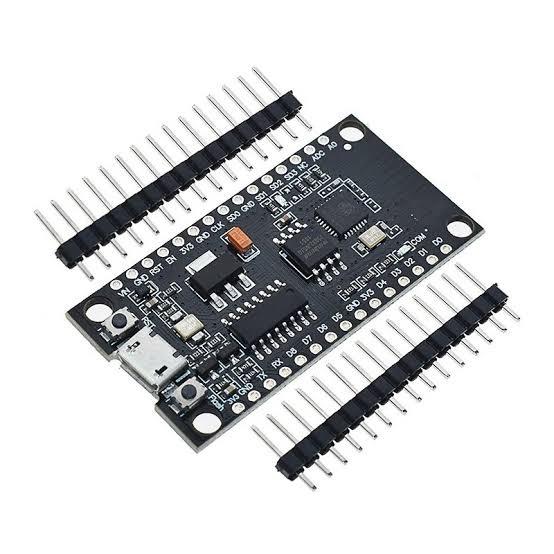
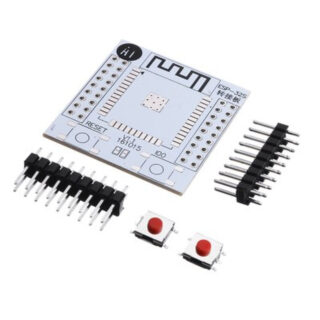


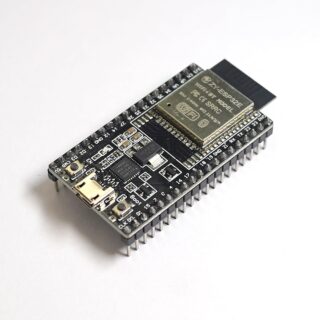
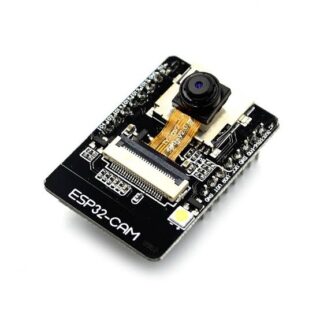

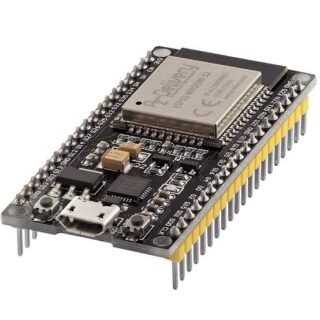
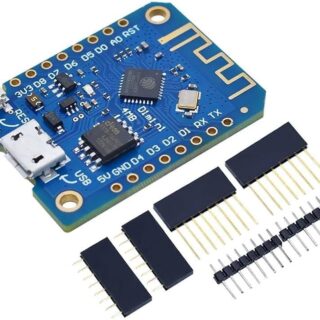
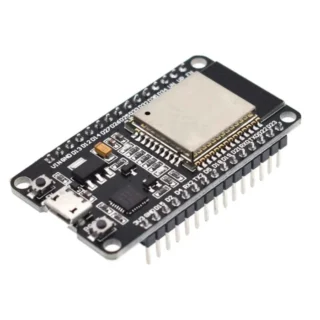
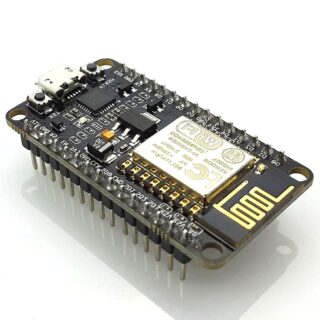



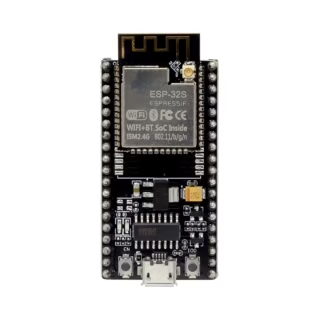

Reviews
There are no reviews yet.